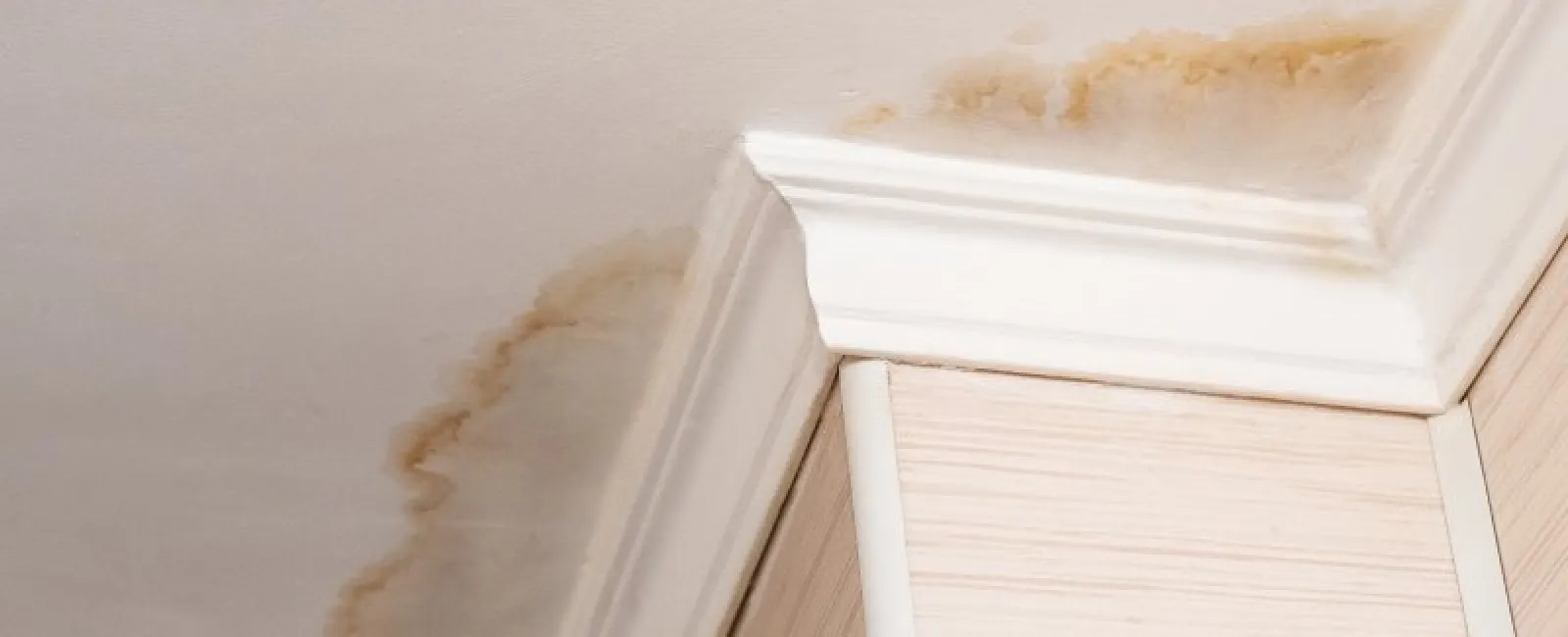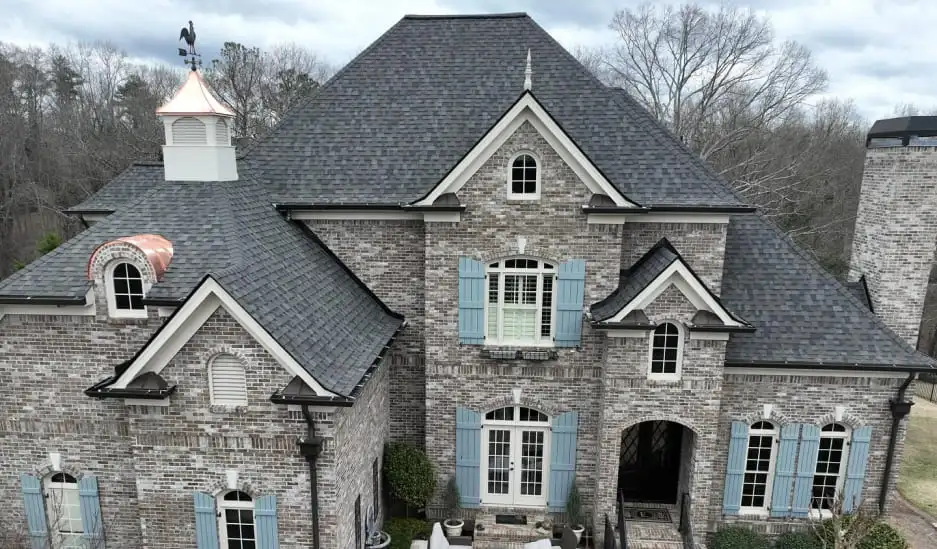Your home’s roof is one of the most important protective barriers in your home, serving as a durable defense against wind, rain, hail, and heat loss, among other environmental factors.
While your roof is built to withstand these elements for years on end, it’s possible for gaps and cracks to develop in your roof’s protective layer. While these openings might appear minor to the untrained eye, even a small opening can result in water leaks that enter your roof and trickle down into your home.
Leaky roofs are a serious problem, but you can minimize the damage—and the cost of repair—by moving quickly as soon as you spot the signs of possible damage. Here’s a quick guide to identifying leaks and figuring out a quick solution to the problem.
Spotting Water Damage on Your Ceiling
Water damage from a leaky roof isn’t always obvious when the leak first develops. Many times, homeowners don’t realize their roof has sprung a leak until water has seeped far enough into the home that it starts to cause damage to interior finishes.
Other than cases where you see water dripping from your ceiling, some common signs of water damage in your home include:
-
Water spots on your ceiling. It’s one of the easiest ways to spot water damage: ceilings in your home may develop darkened spots that indicate pooling water. Typically, this indicates a significant leak or a leak that has developed quickly.
-
Cracked or bubbling paint and finishes. Gradual water damage can cause ripples, bubbles, cracking, and other damage to your ceiling and other interior surfaces. In many cases, this damage indicates a small leak that has persisted for a period of time, exposing that surface to a steady drip of water that has warped and damaged the paint and other materials.
-
A damp or musty smell. Sometimes water damage is difficult to spot, but the accumulation of water creates a breeding ground for mold and mildew that produces a distinct smell in the air.
-
Wood rot in your attic. Even if you don’t spot an active water leak, rotting wood is usually a reliable sign of water damage.
-
The sound of running or dripping water. Even if you can’t see visible evidence of a leak, a dripping or leaking sound could alert you to a relatively fresh leak that’s causing damage to your home’s interior structures.
Possible Causes for Water Leaking From Ceiling
If you want to fix the leak, you need to fix the source. Here are the likely causes of a leak in your roof or ceiling:
-
Damaged shingles. Storm damage or natural wear and tear can lead to damaged or missing shingles. These gaps in roof coverage are one of the most common causes of a leaky roof.
-
Improperly installed shingles or roofing material. If your roof has recently been replaced or repaired, it’s possible that your roof was installed with gaps or other imperfections that opened a path for water to enter your home.
-
Cracked or damaged flashing. The flashing at the edge of your roof can be damaged by falling branches, wind, and other harsh elements, and it can lead to a water leak even if the rest of your roof remains intact and resilient.
-
A blockage in your roof vent or drainage system. Vents and roof drainage can become blocked by branches, leaves, and even ice when temperatures dip low. These blockages can then cause a buildup of water that sends water down your vents or into other crevices and openings in your roof.
-
Clogged gutters. When gutters can’t properly drain, they can lead to standing water that slowly seeps through your roof’s protective layers.
What If Your Roof Only Leaks in Heavy Rain?
One challenge of identifying leaks in a roof is that the leaking is intermittent. Typically, leaks will be most active during periods of rain—and potentially only during periods of heavy rain, depending on the type of leak.
If you notice these leaks only during periods of heavy rain, it’s a strong sign that there’s a leak in your home—and potentially a big one, since the water is quickly moving from your roof to your home’s interior surfaces. It’s also possible that the leak developed quickly and is entering your home through recent roof damage.
Keep in mind that some types of leaking may be more gradual. Water dripping from your ceiling may take some time to start trickling through your house after a rain, so the leaking might not actually be visible until the rain has ended. If you notice consistent leaking throughout the day, including during times when no rain is falling or has recently felled, then you might actually have a plumbing leak that is causing the water damage in your home.
Who to Call For a Water Leak In Your Ceiling
Leaking water can cause damage to your home quickly. For this reason, it’s crucial that you take immediate action to address the leak. After taking preliminary steps to collect dripping water in buckets or pile towels to mitigate the flow of running water, contact a local roof expert to have them visit your home and address the repair.
If you don’t know of a leak repair specialist off of the top of your head, you’ll need to find one quickly. Start by contacting friends and neighbors to see if they have a recommendation, or type “roof leak repair near me” into a search engine to see what local service options pop up. Find a leak repair specialist with a strong local track record and availability to visit your home as soon as possible.
The stress of a leaking roof can be paralyzing for residents. But the faster you take action, the less damage your home will suffer—which leads to lower repair costs, less of a mess, and a faster fix to your roof’s root issue.



